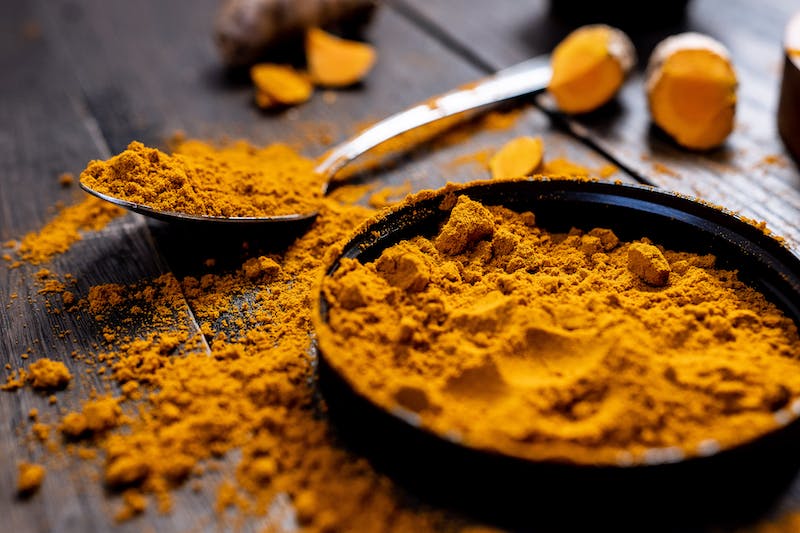
Turmeric, the vibrant golden spice, has captivated the world for centuries, not just for its culinary brilliance but also for its potential health benefits. Among its many touted uses, one stands out prominently: pain relief, especially in the context of arthritis. But is turmeric truly a natural remedy for pain and inflammation, or is it simply a product of hype? In this extensive exploration, we unravel the intricate relationship between turmeric and pain relief, shedding light on the evidence-based research supporting its efficacy, while also delving into personal testimonials to understand the real-world impact of this remarkable spice.
Turmeric Unveiled: The Ancient Healer
Before we delve into the depths of pain relief and arthritis management, let's understand what makes turmeric so exceptional. This spice, derived from the Curcuma longa plant, is native to Southeast Asia and has been a staple in Ayurvedic and traditional medicine for over 4,000 years. The primary active compound in turmeric, curcumin, is known for its potent anti-inflammatory and antioxidant properties, making it a promising candidate for addressing various health concerns, particularly pain and arthritis.
The Arthritis Conundrum: A Global Health Challenge
Arthritis, a broad term encompassing over 100 different types of joint diseases and related conditions, affects millions of people worldwide. Osteoarthritis, the most common form, results from wear and tear on the joints, while rheumatoid arthritis is an autoimmune condition where the immune system attacks the joints. These conditions often lead to pain, inflammation, stiffness, and reduced mobility, significantly impacting the quality of life for those affected.
Turmeric and Pain Relief: The Research Connection
Over the years, research on turmeric's pain-relieving properties, especially in the context of arthritis, has gained momentum. Key findings from scientific studies include:
Anti-Inflammatory Power: Curcumin's anti-inflammatory effects are well-documented and can potentially alleviate joint inflammation in arthritis.
Pain Reduction: Several studies suggest that curcumin may be as effective as nonsteroidal anti-inflammatory drugs (NSAIDs) in reducing arthritis-related pain.
Improved Mobility: Turmeric's anti-inflammatory properties may lead to improved joint function and mobility in arthritis patients.
Synergistic Effects: Combining curcumin with other natural compounds, such as black pepper's piperine, may enhance its bioavailability and effectiveness.
Potential Disease Modification: Some research indicates that curcumin may slow the progression of arthritis, addressing its underlying causes.
Personal Testimonials: Real Stories of Pain Relief
While scientific research provides a strong foundation, the true impact of turmeric on pain and arthritis management is perhaps best understood through personal experiences. Countless individuals have shared their journeys, highlighting the following insights:
Reduced Pain: Many people report a significant reduction in arthritis-related pain after incorporating turmeric into their daily routine.
Improved Functionality: Turmeric has helped some individuals regain joint mobility and perform daily tasks with greater ease.
Reduced Reliance on Medication: Some have been able to decrease their dependence on pain-relief medications, including NSAIDs.
Enhanced Quality of Life: The overall well-being and quality of life of those using turmeric have seen notable improvements.
Long-Term Benefits: Consistent use of turmeric over time appears to yield more profound and lasting results.
Incorporating Turmeric into Your Routine
For those considering turmeric as a natural pain relief remedy, it's essential to know how to make the most of this golden spice. Strategies for incorporating turmeric into your daily routine include:
Turmeric Supplements: High-quality curcumin supplements are available, offering a concentrated form of the active compound.
Turmeric Tea: Brewing turmeric tea with added ingredients like ginger and honey can be soothing and therapeutic.
Turmeric Capsules: Encapsulated turmeric can be a convenient way to enjoy its benefits without the taste.
Turmeric in Cooking: Including turmeric in your daily cooking, such as curries and soups, can be a delicious and practical approach.
Golden Paste: Preparing a golden paste by mixing turmeric with other ingredients like black pepper and coconut oil can enhance its absorption.
Potential Side Effects and Considerations
While turmeric offers promise in pain management, it's essential to exercise caution and consider the following:
Interaction with Medications: Turmeric may interact with certain medications, so consult your healthcare provider before use.
Stomach Upset: Some individuals may experience digestive discomfort when consuming turmeric in large quantities.
Allergic Reactions: Allergies to turmeric are rare but possible, so monitor your body's response.
Quality Matters: Ensure you're using high-quality, organic turmeric for the best results.
The Turmeric-Backed Lifestyle: Beyond Pain Relief
The influence of turmeric extends far beyond pain relief and arthritis management. Embracing a turmeric-backed lifestyle can offer a myriad of holistic benefits:
Antioxidant Protection: Turmeric's antioxidants help combat free radicals, reducing the risk of chronic diseases.
Brain Health: Curcumin may support brain health and lower the risk of neurodegenerative diseases.
Digestive Well-being: Turmeric can aid digestion and promote gut health.
Heart Health: It may reduce the risk of heart disease by improving blood vessel function.
Cancer Prevention: Research suggests that turmeric may play a role in preventing certain types of cancer.
The Future of Turmeric: Ongoing Research
The excitement surrounding turmeric's potential health benefits continues to grow, prompting ongoing research into its applications. Current and future studies aim to explore turmeric's role in:
Autoimmune Diseases: Investigating its potential in managing conditions like lupus and multiple sclerosis.
Mood and Mental Health: Assessing its effects on mood disorders, including depression and anxiety.
Skin Health: Exploring turmeric's use in skincare for conditions like psoriasis and acne.
Diabetes Management: Researching its impact on blood sugar control and insulin sensitivity.
Aging and Longevity: Investigating whether turmeric can support healthy aging and longevity.
Turmeric's Promise in Pain Relief
Turmeric's remarkable journey from an ancient spice to a modern-day health phenomenon is a testament to its potential. While research and personal testimonials provide encouraging insights into its pain-relieving properties, it's essential to approach turmeric as part of a holistic lifestyle. Embracing this golden spice, under the guidance of a healthcare provider, can pave the way for a life marked by reduced pain, improved well-being, and a brighter, healthier future.